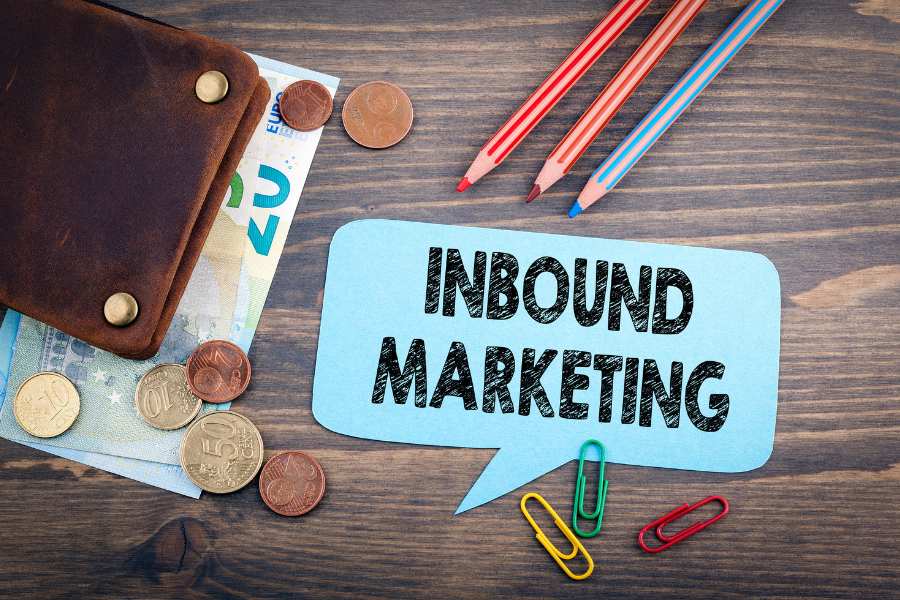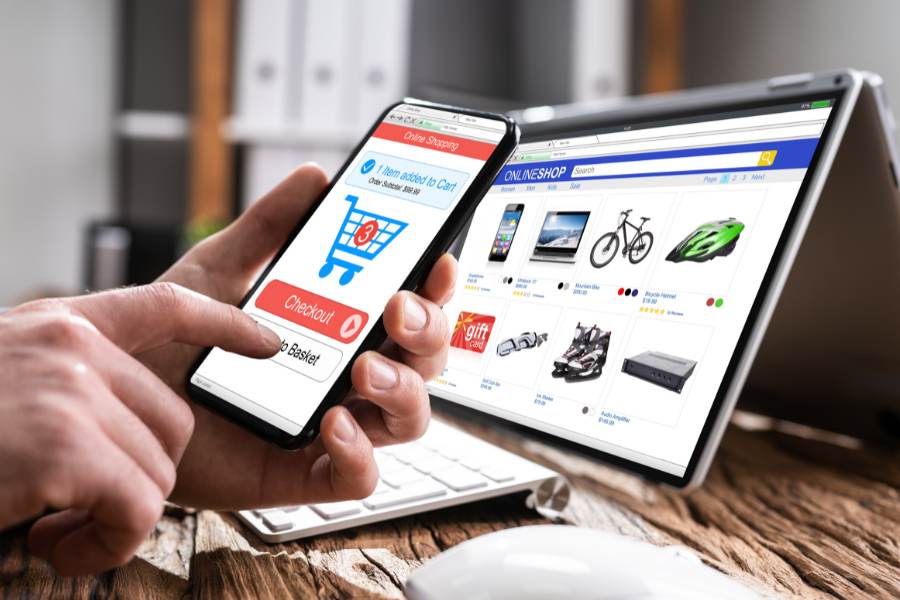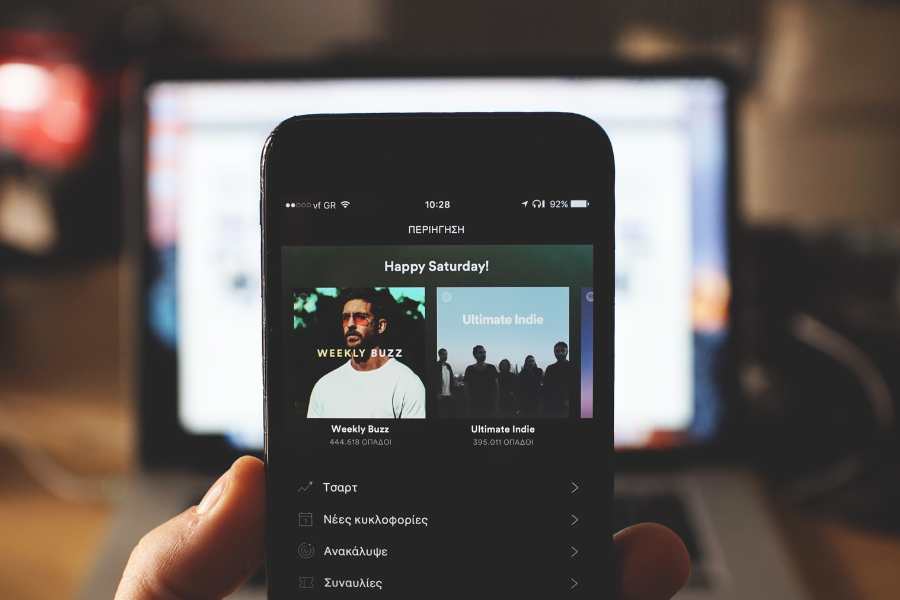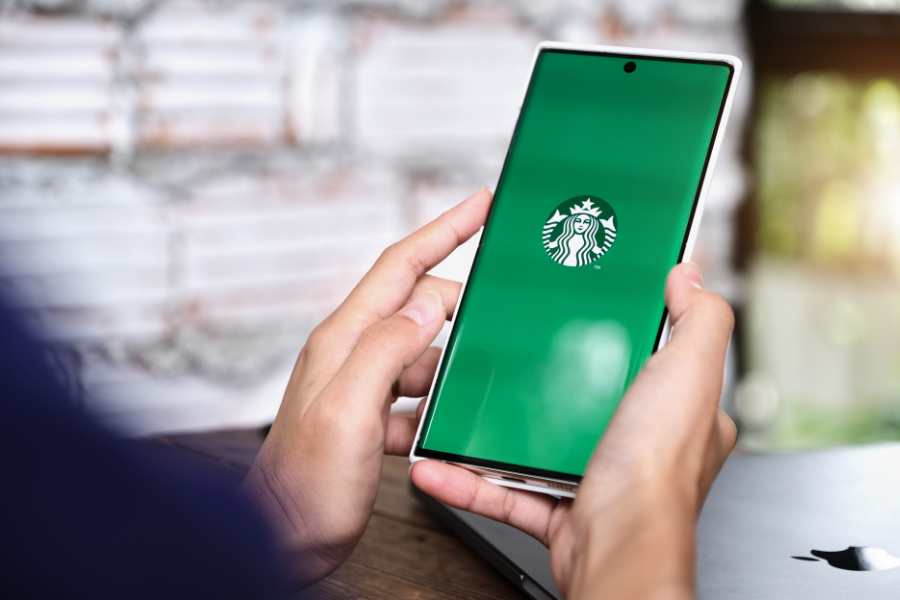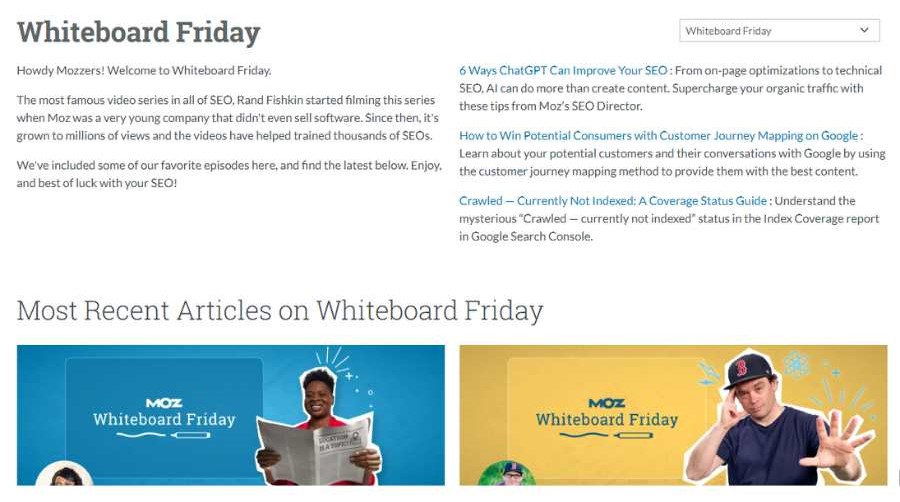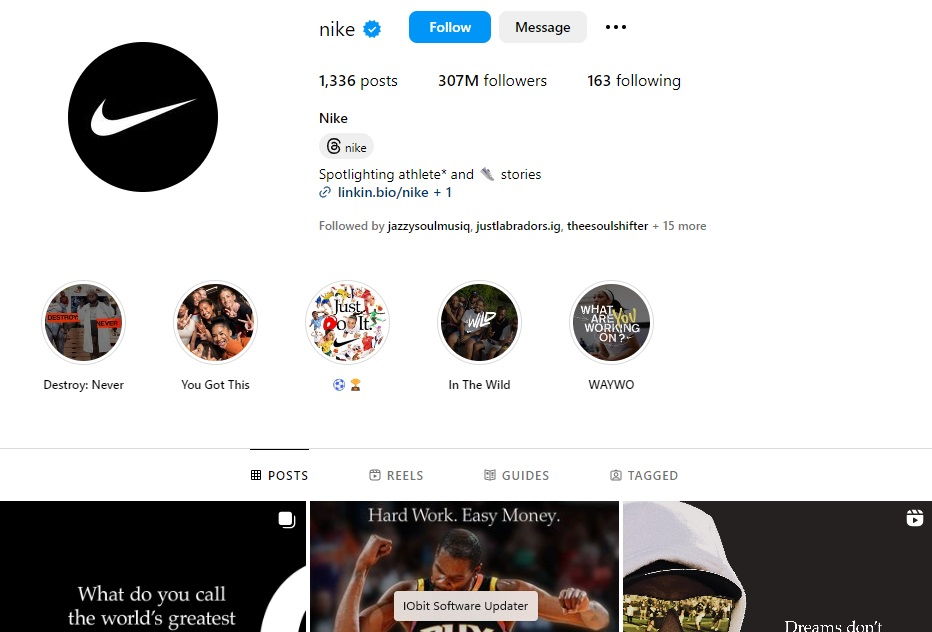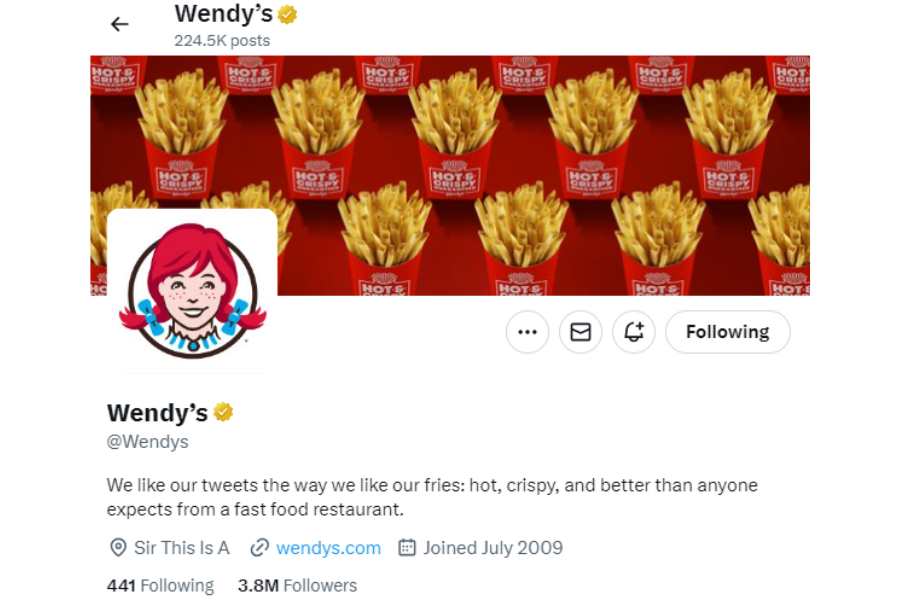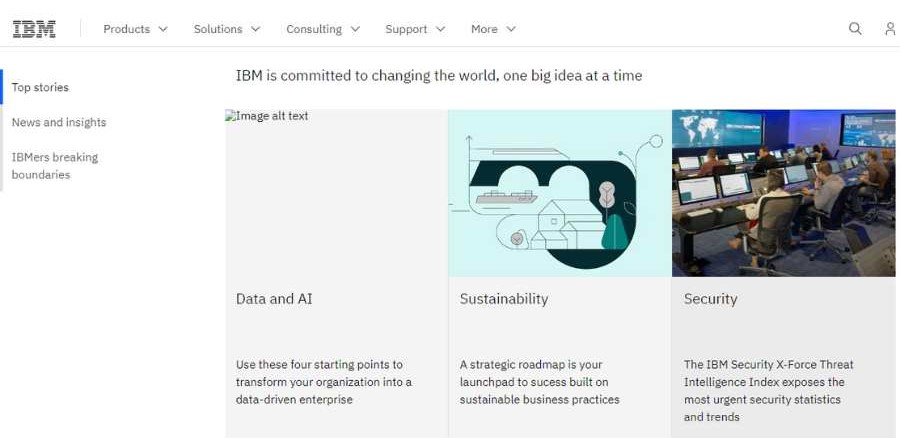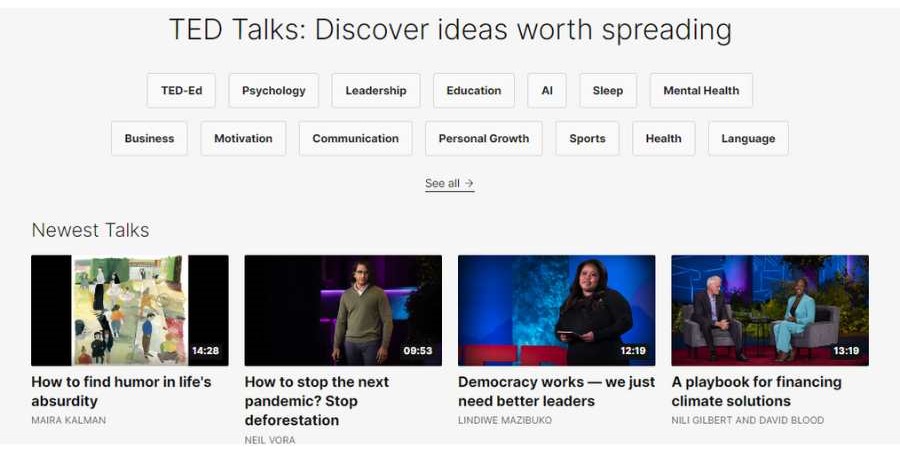
These content marketing case studies demonstrate how to set effective content marketing goals that elevate your brand and boost visibility and conversions.
Content is the lifeblood that propels brands toward their unique aspirations. The spectrum of content marketing goals is as diverse as the myriad objectives that businesses and organizations set for themselves.
Exploring different examples of marketing goals is essential for businesses aiming to define clear and measurable objectives that drive their overall marketing strategy and contribute to sustainable growth.
In the article below, we unravel the intricacies of common content marketing goals, exploring how each serves as a crucial compass guiding businesses toward their desired destinations.
Along with case studies, these content marketing examples exemplify how creative content marketing played a pivotal role in achieving exceptional results, showcasing a strategic fusion of innovative content creation and effective marketing approaches.
Contents
10 Content Marketing Goals (With Case Studies)
Content marketing goals can vary depending on the specific objectives of a business or organization. However, some common content marketing goals include:
#1. Brand Awareness
Goal: Increase brand visibility and recognition.
Case Study: Blendtec’s “Will It Blend?”
Blendtec, a company that manufactures high-performance blenders, aimed to increase brand awareness through an unconventional content marketing campaign called “Will It Blend?”
The campaign featured videos of the company’s founder, Tom Dickson, blending various items, including iPhones, golf balls, and even a rake handle, using Blendtec blenders. The entertaining and unexpected nature of the content garnered significant attention.
Results:
- The videos went viral, attracting millions of views on YouTube.
- Blendtec’s brand gained widespread recognition beyond its niche market.
- The campaign contributed to a substantial increase in sales and brand engagement.
Goal: Build a positive brand image.
Case Study: Airbnb’s Community-Centric Content
Airbnb focuses on building a positive brand image by highlighting stories of community and connection in its content marketing.
They showcase user-generated content, such as photos and testimonials from hosts and guests, emphasizing the unique and personal experiences that Airbnb enables.
Results:
- The emphasis on community values helped Airbnb differentiate itself in the travel industry.
- Positive user stories contributed to an emotional connection between the brand and its audience.
- The brand image became associated with diversity, inclusivity, and authentic travel experiences.
In both cases, the content created resonated with the target audience and effectively communicated the brand’s values.
Blendtec’s humorous and bold approach memorably showcased the product’s capabilities, while Airbnb’s community-centric content built a positive brand image through real-life stories and experiences.
These examples demonstrate the power of creative and authentic content in achieving brand awareness goals.
#2. Audience Engagement
Goal: Foster engagement with the target audience.
Case Study: Starbucks’ “White Cup Contest”
Starbucks aimed to increase audience engagement by leveraging user-generated content. The company launched the “White Cup Contest”, encouraging customers to decorate their iconic white Starbucks cups and submit photos of their creations.
This campaign transformed Starbucks’ coffee cups into a canvas for creativity. In this case study, the synergy between content marketing and branding emerges as a driving force, demonstrating how a thoughtful integration of user-generated content strategies elevates brand presence and resonance.
Results:
- Thousands of customers participated, showcasing their artistic interpretations.
- The campaign generated a significant amount of user-generated content across social media.
- Starbucks strengthened its connection with customers by turning them into active contributors to the brand’s visual identity.
Goal: Encourage interaction and participation.
Case Study: Coca-Cola’s “Share a Coke” Campaign
Coca-Cola sought to boost interaction and participation with its “Share a Coke” campaign. Instead of featuring the Coca-Cola logo, the company printed popular names and phrases on its bottles, encouraging people to find and share a Coke with friends or family members whose names were on the bottles.
The campaign aimed to create a personal connection with consumers.
Results:
- Social media was flooded with images of personalized Coca-Cola bottles, encouraging sharing.
- Consumers actively sought out and shared their unique Coke bottles, driving social media engagement.
- The campaign increased Coca-Cola’s sales and strengthened its brand as a social connector.
In both examples, brands successfully engaged their audiences by inviting them to actively participate in the brand experience.
Starbucks and Coca-Cola created campaigns that encouraged creativity and personal connections, fostering a sense of community and interaction among their customers.
These strategies demonstrate how audience engagement goals can be achieved by involving the audience in the brand narrative.
#3. Lead Generation
Goal: Capture leads and expand the customer base.
Case Study: HubSpot’s Inbound Marketing Strategy
HubSpot excels in leveraging content marketing for lead generation, employing a strategic approach that combines valuable resources, educational content, and gated materials to attract and convert prospects into qualified leads.
By providing valuable content such as this free SEO training course on building sustainable search engine traffic, relevant to their target audience (marketers, sales professionals, and business owners), HubSpot encourages users to exchange their contact information for access to these resources.
HubSpot’s innovative approach seamlessly blends inbound marketing and content marketing strategies, showcasing a harmonious synergy that drives impressive results. Its commitment to an effective inbound marketing content strategy has proven instrumental in elevating brand visibility, engagement, and conversions.
By intertwining inbound marketing and content marketing seamlessly, HubSpot has become a trailblazer, offering businesses a comprehensive solution to navigate the intricacies of the digital landscape successfully.
Results:
- HubSpot has amassed a large database of leads through a focus on content marketing and lead generation.
- The free resources establish HubSpot as an authority in the marketing and sales space.
- Leads generated through content marketing efforts often convert into paying customers over time.
Goal: Drive traffic to landing pages or sign-up forms.
Case Study: Dropbox’s Referral Program
Dropbox, a cloud storage service, implemented a highly successful referral program to drive traffic and capture leads.
Users were incentivized to refer friends by offering additional storage space for both the referrer and the new user. This strategy not only increased sign-ups but also encouraged users to actively promote Dropbox to their networks.
Results:
- The referral program contributed to rapid user acquisition and growth.
- Dropbox strategically placed referral prompts within the user interface to capture leads seamlessly.
- The program turned existing users into brand advocates, driving both traffic and sign-ups.
These examples illustrate how lead-generation goals can be achieved through a combination of valuable content and strategic incentives.
In the HubSpot case study, the spotlight shines on their unparalleled success in integrating an inbound content marketing strategy, while Dropbox’s referral program leverages the power of existing users to drive traffic and capture new leads.
Both approaches showcase the importance of providing value and creating incentives to expand the customer base.
#4. Customer Education
Goal: Provide valuable information to educate the audience.
Case Study: Moz’s Blog and Educational Content
Moz, a pioneer in the digital marketing space, exemplifies the efficacy of SEO-driven content strategies. Moz’s blog and educational resources provide in-depth guides, tutorials, and insights into the complex world of search engine optimization.
Moz’s commitment to SEO in content marketing not only enhances organic visibility but also establishes the brand as an authority in the ever-evolving realm of search engine optimization.
Results:
- Moz’s educational content has helped users understand and implement SEO effectively.
- The blog and resources contribute to increased brand loyalty and user trust.
- The company’s commitment to education aligns with its customer-centric approach.
Goal: Position the brand as an industry authority.
Case Study: Salesforce’s Thought Leadership Content
Salesforce, a leading customer relationship management (CRM) platform, positions itself as an industry authority through thought leadership content.
The company produces whitepapers, reports, and articles that explore emerging trends, technological advancements, and best practices in the CRM and business technology space. Salesforce’s content not only educates its audience but also establishes the brand as a trusted source of expertise.
It exemplifies the profound impact of a thought leadership content strategy, showcasing how the company strategically positions itself as an industry authority through insightful and innovative content that sets trends and shapes the discourse in the CRM and business technology space.
Results:
- Salesforce’s thought leadership content reinforces its status as an industry leader.
- The brand becomes synonymous with innovation and staying ahead of industry developments.
- Positioning as an authority contributes to increased credibility and attracts a knowledgeable audience.
In these examples, both Moz and Salesforce use content to educate their audiences and establish themselves as authorities in their respective fields.
By providing valuable, informative content, these brands not only contribute to customer education but also build trust and credibility, fostering long-term relationships with their audiences.
#5. Conversion
Goal: Drive conversions and sales.
Case Study: Amazon’s Product Recommendations
Amazon, the e-commerce giant, excels at driving conversions through its personalized product recommendation engine.
By analyzing user behavior, purchase history, and preferences, Amazon’s algorithms suggest products that are highly relevant to individual users.
This approach not only enhances the shopping experience but also significantly contributes to increased sales and conversions.
Results:
- The personalized recommendation engine drives additional purchases and cross-selling.
- Amazon’s focus on user experience and convenience reinforces customer loyalty.
- Conversion rates increase as users are more likely to make additional purchases based on recommendations.
Goal: Encourage users to take specific actions (e.g., making a purchase).
Case Study: Nike’s Limited-Time Offers and Urgency Tactics
Nike employs conversion-focused strategies, such as limited-time offers and urgency tactics, to drive users to take specific actions.
For example, Nike might run a limited-time sale or promote exclusive releases, creating a sense of urgency. By leveraging scarcity and time-sensitive offers, Nike motivates users to make a purchase promptly.
Results:
- Limited-time offers create a sense of urgency, driving immediate action.
- Nike’s marketing campaigns generate buzz and excitement around product releases.
- The urgency tactics contribute to increased conversion rates during promotional periods.
In these cases, both Amazon and Nike employ different strategies to drive conversions.
Amazon leverages data-driven personalized recommendations, while Nike utilizes limited-time offers and urgency tactics to encourage users to take specific actions, such as making a purchase.
These approaches highlight the importance of understanding user behavior and employing effective marketing techniques to drive conversions and sales.
#6. Customer Retention
Goal: Retain existing customers by providing ongoing value.
Case Study: Spotify’s Personalized Playlists and Recommendations
Spotify, a music streaming service, focuses on customer retention by continuously providing value through personalized playlists and music recommendations.
Using algorithms that analyze user listening habits, Spotify curates playlists tailored to individual preferences. This ongoing value keeps users engaged, encourages them to stay subscribed, and fosters a long-term relationship with the platform.
Results:
- Personalized playlists enhance the user experience, making it more enjoyable and satisfying.
- Continuous value delivery encourages users to remain loyal to Spotify as their go-to music platform.
- The focus on ongoing personalization contributes to customer satisfaction and retention.
Goal: Foster loyalty and repeat business.
Case Study: Starbucks’ Rewards Program
Starbucks has successfully fostered customer loyalty through its rewards program. The program incentivizes repeat business by offering points for every purchase, which can be redeemed for free drinks or other perks.
By rewarding customer loyalty, Starbucks not only encourages repeat visits but also creates a sense of exclusivity and appreciation among its customer base.
Results:
- The rewards program motivates customers to choose Starbucks over competitors for their coffee purchases.
- Loyalty members feel a sense of exclusivity and appreciation, reinforcing their connection to the brand.
- Repeat business is incentivized, contributing to sustained revenue from loyal customers.
In these examples, both Spotify and Starbucks employ strategies to retain existing customers and foster loyalty.
Spotify focuses on continuous value through personalized content, while Starbucks uses a rewards program to encourage repeat business and create a sense of loyalty among its customers.
These customer-centric approaches contribute to long-term relationships and sustained success for the brands.
#7. SEO and Organic Traffic
Goal: Improve search engine rankings.
Case Study: Moz’s Whiteboard Friday
In a testament to Moz’s versatility, the company also champions the approach of content-led SEO, reinforcing its position as an industry leader through its “Whiteboard Friday” series. In these video tutorials, Moz experts share insights, tips, and best practices related to SEO.
The focus is on creating compelling and valuable content that naturally integrates SEO elements. This content-driven SEO strategy involves producing high-quality, informative materials that address user intent while incorporating SEO tactics seamlessly.
Results:
- Moz’s content ranks well in search engine results, driving organic traffic.
- The educational content establishes Moz as an authority in the SEO space.
- Improved rankings lead to increased visibility among target audiences.
Goal: Increase organic traffic to the website.
Case Study: HubSpot’s Blogging Strategy
HubSpot, a marketing and sales software company, places a significant emphasis on blogging as part of its content strategy. Its SEO-based content marketing is strategically optimized to align with SEO best practices.
By consistently publishing blog posts that address common challenges and questions in the marketing and sales industry, HubSpot attracts organic traffic from users searching for relevant information.
Its success lies in its ability to intertwine content marketing and SEO harmoniously, leveraging the strengths of both to achieve not only higher search rankings but also engaging, user-centric content that captivates audiences and establishes it as an industry thought leader.
Results:
- HubSpot’s blog ranks high for relevant industry keywords, driving organic traffic.
- The blog serves as a valuable resource, attracting a steady stream of new visitors.
- Increased organic traffic contributes to lead generation and brand visibility.
These cases demonstrate how a strategic approach to content creation, optimization, and industry expertise can improve search engine rankings and increase organic traffic.
Both Moz and HubSpot leverage content that not only aligns with user intent but also provides substantial value, ultimately driving visibility and traffic to their respective websites.
#8. Social Media Presence
Goal: Enhance the brand’s presence on social media platforms.
Case Study: Nike’s Instagram Strategy
Nike strategically enhances its social media presence, particularly on Instagram. The brand consistently shares visually compelling content that aligns with its values and resonates with its target audience.
Nike leverages the platform’s visual nature to showcase its products in action, highlight athlete endorsements, and tell powerful stories.
By maintaining an active and engaging presence, Nike reinforces its brand identity and connects with consumers in a meaningful way.
Results:
- Nike’s Instagram account has become a hub for lifestyle and sports enthusiasts.
- The brand’s visual content generates high levels of user interaction and shares.
- Enhanced social media presence contributes to increased brand awareness and loyalty.
Goal: Increase social media followers and engagement.
Case Study: Wendy’s Twitter Persona
Wendy’s, a fast-food chain, has gained attention for its witty presence on Twitter. The brand engages with its audience conversationally and entertainingly, often responding to user comments and participating in trending topics.
This approach has not only increased Wendy’s follower count but has also generated high levels of engagement and viral moments, turning the brand into a social media sensation.
Results:
- Wendy’s Twitter account attracts a large and engaged following.
- The brand’s humorous interactions with users lead to increased retweets and mentions.
- High levels of engagement contribute to a positive brand image and increased visibility.
In these examples, both Nike and Wendy’s employ distinct strategies to enhance their social media presence.
Nike focuses on visual storytelling on Instagram to connect with its audience, while Wendy’s leverages humor and interactivity on Twitter to increase followers and engagement.
These approaches showcase the importance of understanding the unique dynamics of each social media platform and tailoring content to resonate with the target audience.
#9. Thought Leadership
Goal: Establish the brand or key individuals as thought leaders in the industry.
Case Study: IBM’s Thought Leadership Initiatives
IBM has successfully positioned itself as a thought leader in the technology and business space through various thought leadership initiatives. The company publishes research reports, whitepapers, and articles that explore emerging technologies, industry trends, and the future of business.
By consistently producing high-quality, insightful content, IBM has become a go-to source for valuable information in the technology sector. Key executives also contribute to thought leadership by participating in industry conferences and events.
Results:
- IBM is recognized as an authority in the technology and business domains.
- Thought leadership content generates media coverage, amplifying the brand’s influence.
- Industry professionals and decision-makers turn to IBM for insights and expertise.
Goal: Contribute to industry conversations and trends.
Case Study: TED Talks
TED, a nonprofit organization known for its TED Talks, has become a global platform that contributes to a wide range of industry conversations and trends.
TED Talks feature thought leaders, experts, and innovators sharing groundbreaking ideas and insights across various disciplines.
By curating and sharing these talks online, TED has played a significant role in shaping global discussions on topics ranging from science and technology to education and culture.
The TED Talks case study highlights the effectiveness of a thought leadership marketing plan, underscoring how the meticulously curated talks contribute to TED’s global influence and position the platform as a thought leader in various fields.
Results:
- TED Talks have become a cultural phenomenon, reaching a global audience.
- The platform consistently brings attention to emerging trends and ideas.
- TED’s influence extends beyond its events, contributing to ongoing conversations worldwide.
These examples demonstrate how thought leadership can be achieved through a combination of insightful content creation, active participation in industry discussions, and contributing to the broader intellectual landscape.
Both IBM and TED have established themselves as thought leaders by consistently delivering valuable insights and contributing meaningfully to industry conversations and trends.
#10. Measuring ROI
Goal: Track and measure the return on investment from content marketing efforts.
Case Study: HubSpot’s Attribution Modeling
HubSpot employs a sophisticated attribution modeling system to measure the ROI of its content marketing efforts. The company uses multi-touch attribution, which considers various touchpoints in the customer journey.
By tracking how different content pieces contribute to lead generation and conversion, HubSpot gains insights into the effectiveness of its content marketing strategy.
This approach allows the company to allocate resources strategically to the most impactful content types and channels.
Results:
- HubSpot can attribute revenue and conversions to specific content interactions.
- The company gains a comprehensive understanding of the customer journey.
- ROI measurement informs decision-making, enabling HubSpot to optimize its content strategy.
Goal: Analyze key performance indicators (KPIs) to assess success.
Case Study: Airbnb’s Content Marketing Analytics
Airbnb utilizes a range of key performance indicators (KPIs) to assess the success of its content marketing initiatives.
KPIs include not only traditional metrics like website traffic and conversion rates but also qualitative indicators such as brand sentiment and user engagement on social media.
By analyzing a diverse set of KPIs, Airbnb obtains a holistic view of how its content resonates with the audience and contributes to business objectives.
Results:
- Airbnb gains insights into the impact of content on brand perception.
- KPI analysis informs content optimization and strategy adjustments.
- The company adapts its content marketing approach based on data-driven insights.
In these cases, both HubSpot and Airbnb emphasize the importance of data-driven approaches to measure ROI and assess content marketing success.
HubSpot’s attribution modeling provides a detailed understanding of how content contributes to revenue, while Airbnb’s diverse set of KPIs allows for a comprehensive evaluation of content impact on brand and user engagement.
These practices highlight the significance of leveraging analytics to make informed decisions and continuously improve content marketing strategies.
Mastering the art of setting effective content marketing goals is pivotal for navigating the ever-evolving digital landscape. From amplifying brand visibility to fostering audience engagement and securing conversions, the strategic pursuit of these goals defines the trajectory of success in the competitive online realm.
As we’ve uncovered the diverse objectives that propel brands forward, remember that strategic content marketing goal-setting not only enhances visibility but also transforms engagement into tangible conversions.
By crafting an effective content strategy, businesses can elevate their brand, leaving an indelible mark in the competitive online realm. Let your goals be the driving force that propels your brand towards enduring success.
Content Marketing and Lead Generation Tips
- How to Outsource SEO Services to an SEO Specialist
- 21 SEO Tips For Blogs: Learn How To Do SEO For Beginners
- Best SEO Content Writing Tools To Write SEO-Friendly Articles
- How to Create a Content Audit Report to Update Old Blog Posts
- How To Get Social Media Content Ideas For Engaging Social Media Posts
- 14 Bottlenecks in Your Lead Generation Process (and How to Fix Them)
- Lead-Generating Quiz Marketing: How to Boost Quiz Leads and Conversions
© 2023 – 2025, Priya Florence Shah. All rights reserved.
Priya Florence Shah is a bestselling author and an award-winning blogger. Check out her book on emotional self-care for women. Priya writes short stories and poetry and chills with her two-legged and four-legged kids in her spare time.
Discover more from Business & Branding Tips
Subscribe to get the latest posts sent to your email.

